One-of-a-kind Patient Safety Course gives TCOM students an edge
Lillee Gelinas, MS, RN, CPPS, FAAN, remembers the first patient she ever lost. She was in the U.S. Navy Nurse Corps and missed a respiratory depression that ultimately led to the patient’s death.
Devastating experiences like that drove the Texas College of Osteopathic Medicine (TCOM) to create the nation’s first and only Patient Safety Course that allows students to sit for the Certified Professional in Patient Safety certification exam. Gelinas is the Section Director and the course’s primary instructor.
This innovative course makes TCOM the only medical school in the nation allowing students to not only obtain important and practical safety education, but also to give them a competitive edge when it comes to potential residency upon graduation.
Dr. Janet Lieto, the Professional Identity and Health Systems Practice Course Director, mindfully developed a plan in just six months to turn an idea into curriculum. Supported by University of North Texas Health Science Center leadership that included President Dr. Michael R. Williams, Provost Dr. Charles Taylor and Dean of TCOM Dr. Frank Filipetto, the new course will have immeasurable impact.
“I’m incredibly proud of Dean Filipetto and his leadership team for thinking creatively and always keeping TCOM at the forefront of innovation in medical education,” President Williams said. “The incorporation of this patient safety course into our curriculum prepares the future providers we train to be leaders in eliminating preventable errors in medicine and providing patient-centered care.”
This is the story of a new way of prioritizing patient safety within a medical school curriculum, the innovative actions of TCOM and the dividends its students are seeing.
How it began
In the summer of 2019, ten students from TCOM made history by participating in a Pilot Program. SaferCare Texas provided 10 scholarships, utilizing the Institute for Healthcare Improvement’s curriculum, to complete the Certified Professional in Patient Safety (CPPS) pilot program.
The program prepared students for the CPPS certification exam. The CPPS credential is earned by professionals who have demonstrated a high level of proficiency in the core standards of patient safety. It is a thorough examination covering five patient safety domains, culture, leadership, patient safety risks and solutions, measuring and improving performance and systems thinking and design along with human factors.
The national pass rate for first-time certification exam takers is 70%. Nine of the 10 TCOM students passed the certification exam after taking the course. Without the course, students would not have an opportunity to take the certification exam until they are practicing physicians.
Patient safety is of increasing concern in the medical community. A 2018 study by Johns Hopkins claims more than 250,000 people in the U.S die every year from medical errors. Other reports assert the number to be as high as 440,000. It is the third-leading cause of death in America.
Lillee contacted TCOM Associate Professor Dr. Lieto, who participated in the pilot program alongside the TCOM students. She recognized the importance of the Patient Safety curriculum and how it relates to medical students understanding of Professional Identity and Health Systems Science, the third pillar of medical education. Dr. Lieto recognized that all medical students should have the opportunity to learn Patient Safety and sit for the CPPS exam.
Things moved quickly. Early in 2020, Gelinas and Dr. Lieto started planning the new curriculum within the Professional Identity and Health Systems Practice Course. Dr. Lieto knew she had a mountain to climb to make the course a reality in such a short period.
Dr. Lieto mindfully added Patient Safety into the larger context of Professional Identity and the Health Systems Practice Course. This was done decisively to meet the needs of TCOM students entering the profession by giving them tools needed for improving patient safety before leaving medical school.
Dr. Lieto worked tirelessly to strike the right balance to meet the needs of the students for this new course. She then worked with TCOM’s senior leadership and Provost Taylor to get the curriculum approved as part of the Professional Identity and Health System Practice Course.
“Dr. Filipetto had tasked us with developing a curriculum for the third pillar of health, which is Health System Sciences,” said Dr. Lieto said. “Health System Science is rarely taught in a mindful manner in U.S. medical schools. There are bits and pieces of it, but what we have done is to put it into the curriculum across three years, which is innovative and needed to prepare medical students to become leaders in health care system reform.”
The curriculum was vetted and approved by the TCOM Curriculum committee and other senior leaders. Dr. Lieto had succeeded at implementing a new, innovative course within the larger Health System Practice Course through determination and ingenuity, which was no easy task. The third-pillar medical education was about to be revolutionized.
One big problem to be addressed was how long the course would take to complete? More importantly, how and where would it fit in an already packed medical school curriculum?
After consideration and discussion with Lillee Gelinas, a two-week accelerated course was determined to be the best approach during third year when students are visualizing and experiencing clinical medicine, including a broken healthcare system.
Dr. Lieto met with Katy Kemp, TCOM’s Executive Director of Clinical Education and Dr. David Mason, the Assistant Dean of Osteopathic Clinical Education, to discuss where to place Patient Safety in third year. They suggested speaking to TCOM’s Chair of Medical Education Dr. Albert Yurvati, who agreed to carve out two weeks from the popular surgery rotation, reducing it from eight weeks to six weeks.
“I knew this was very important,” Dr. Yurvati said. “The students need to realize that surgery has so much of a clinical component and patient safety is a very big priority. We weren’t reducing their surgery rotation; this course was supplementing their training. I didn’t think it would be a disadvantage at all.”
One question remained. Who would teach the course? There was no question in the mind of Dr. Lieto who that person should be — Lillee Gelinas.
“I had never taught in medical school: my background was mainly practice,” Gelinas said. “Patient safety is a broader topic area, but I knew this strategic path for implementing innovative medical school curriculum had a firm base.”
What would have typically taken 18-months to design, develop and implement was done in six months.
“The leadership from President Williams on down was in total alignment with our strategy and that made it all happen so fast” Gelinas said.
TCOM pushed forward quickly. Gelinas was officially hired as a full-time TCOM faculty member on June 15 and three weeks later the course launched.
“Lillee is an unbelievable educator. When I sat in her course, I thought every student needs to learn this,” Dr. Lieto said. “We had wonderful collaborators like Dr. Yurvati, who as a surgeon understood the importance of patient safety. Everyone understood the importance and that’s why we were able to do this so quickly.”
A Game-Changer for Students
TCOM fourth-year student Conner Reynolds has had a highly decorated medical school career. A few of his accolades include receiving the AOF/AOA Presidential Memorial Scholarship Award and induction into the Gold Humanism Society. He also is applying for a highly competitive residency program in Diagnostic Radiology.
When TCOM decided to implement Patient Safety into the curriculum, Reynolds jumped at the chance to take the course as a fourth-year elective.
“It is truly miraculous to see innovation on this pace and scale,” Reynolds said. “Lillee is a phenomenal educator and patient safety professional. It is an honor and privilege to learn from her.”
Reynolds found himself fielding questions about the course, though not just from classmates but also from residency directors.
“Numerous interviewers have been intrigued by seeing the course and patient safety certification on my CV, as few have seen anything similar,” Reynolds said. “They have been blown away by the Patient Safety Section’s audacious goal of equipping all TCOM students with advanced proficiencies in safety science, system design, and human factors engineering.”
“One interviewer at a competitive program said my enrollment and involvement in this course made me a stronger candidate and influenced their decision to extend an interview invitation. I believe it played a substantial role in other interview invitations as well.”
Patient Safety is A Priority
Dr. Yurvati, a world-renowned surgeon, was one of the first faculty members to buy into the Patient Safety Course because during his 25-year career he saw the importance of it.
‘When I talk with the students, I tell them about the importance of patient safety in the operating room,” Dr. Yurvati said. “I tell them about the ACGME Milestone 2.0 committee I served on and how patient safety is a priority. This is going to give students another dimension and many program directors don’t have a lot of experience in this arena.”
Dr. Yurvati also makes it personal with the students. He has battled his own health problems over the last nine months. After having one of many surgeries, an occlusion patch broke off while he was still in the ICU. He suffered massive swelling in his leg because it wasn’t elevated and the result was nearly catastrophic.
“Something so simple was a near miss that could have been a major complication and could have lost me my leg,” Dr. Yurvati said.
His message resonates with the students. The concerns of not having those extra two weeks of a surgery rotation are quickly washed away with testimonials of how crucial patient safety is.
“Students were a hard sell at first,” Dr. Lieto said. “But over time, the students started seeing through experiencing the course the value of Patient Safety. The way Lillee spoke to them, she just presented the facts to them. The emails starting pouring in that the student’s eyes were opened and they valued the intense curriculum and the chance to experience it. They became so supportive.”
“We had the right team with Lillee and Dr. Lieto,” said Dr. Yurvati. They really put a lot of effort into this and I give them credit.”
Ahead of the Curve
When TCOM’s Class of 2025 arrives this summer, the Patient Safety Course will continue to be a regular part of the curriculum across the board. The course has been so successful that TCOM even has expanded it to include faculty members and clerkship directors.
“HSC and TCOM prioritize patient safety,” Gelinas said. “We had 23 faculty and clerkship directors in our February class. The money has been allocated by the President and all of TCOM’s clerkship directors will have to opportunity to take the CPPS examination by the end of the 2021 fiscal year.”
The most ardent skeptics in the summer of 2020 — TCOM third-year students — are now the program’s greatest advocate.
“I would tell them (students) that the Patient Safety Section is easily one of the most valuable courses in their entire medical career,” Reynolds said.
The nation has taken note of how successful this program has become at TCOM. Dr. Lieto and Lillee Gelinas are hot commodities when it comes to presenting this curriculum to other medical schools and at national conferences.
“Everyone wants to know how we are doing it,” Dr. Lieto said.
“I don’t give away our secrets, I’m pretty vague,” said Gelinas with a chuckle.
The secret to their success is being kept under wraps for now. However, the success of the course and its ultimate goal, patient safety, will revolutionize medical schools around the nation.
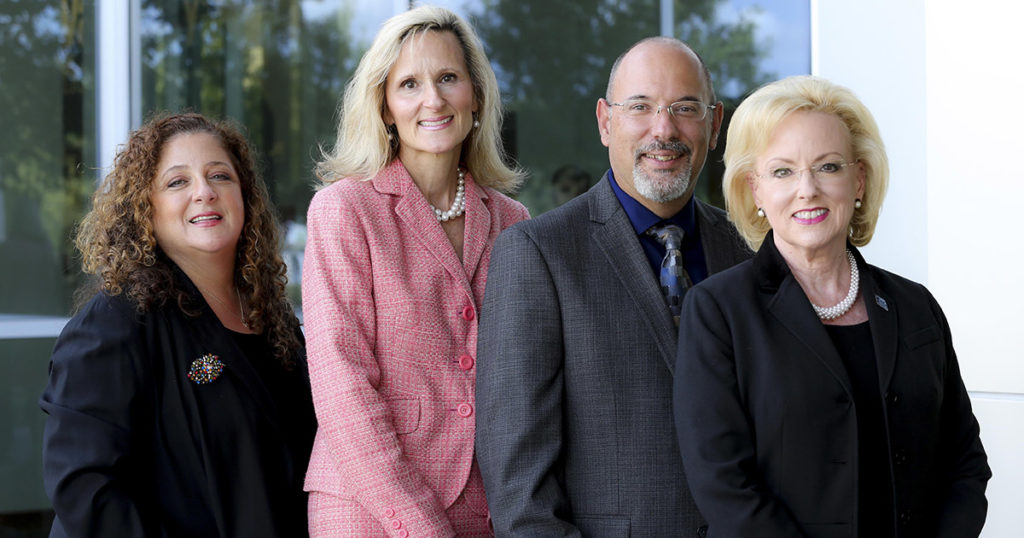
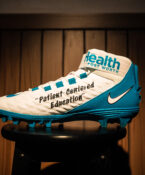
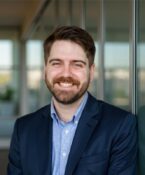
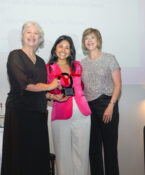
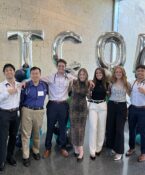


Social media